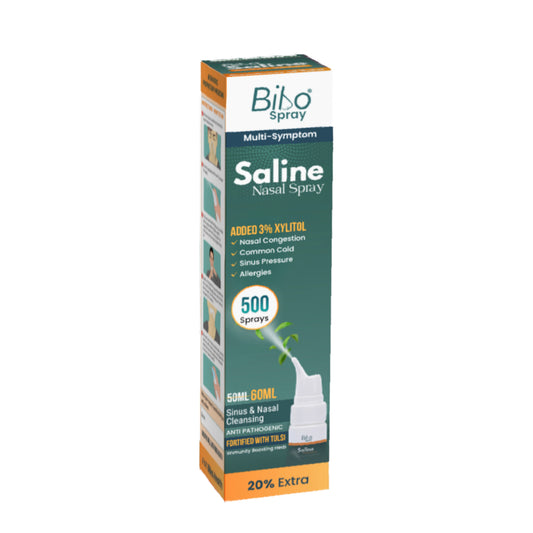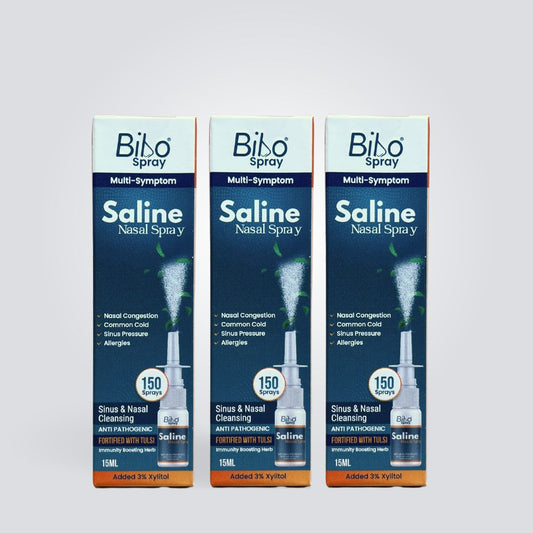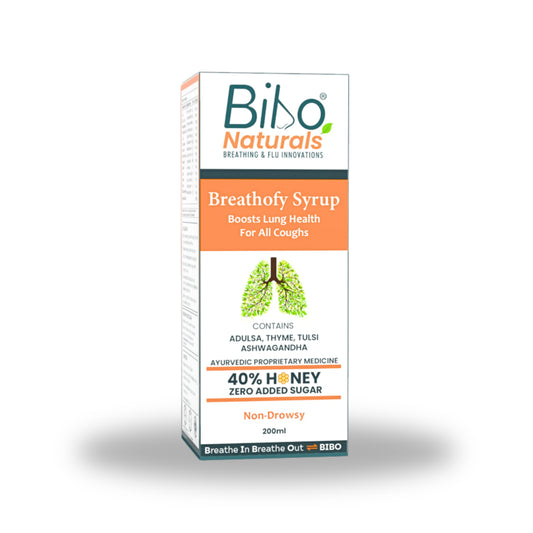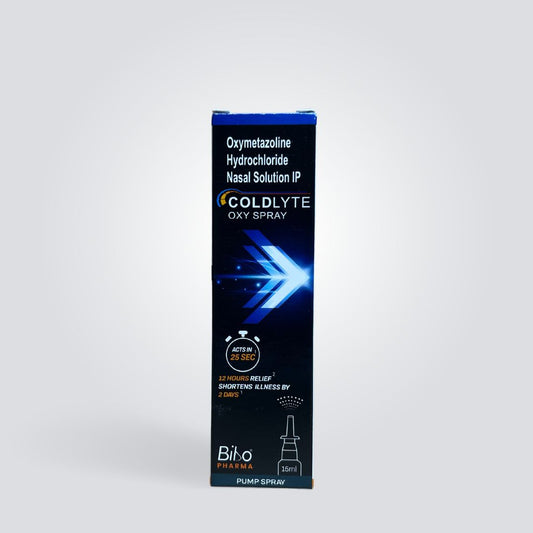
COPD is a chronic disease that affects the airways and gradually worsens over time. It is a leading cause of morbidity and mortality, placing a significant burden on healthcare systems and individuals.
It is primarily characterized by obstructed airflow, making it difficult for individuals to breathe properly. The condition usually develops due to long-term exposure to irritants, such as cigarette smoke, air pollution, or occupational hazards.
Causes of COPD
The primary cause of COPD is tobacco smoking. In fact, smoking accounts for approximately 80-90% of COPD cases. Prolonged exposure to secondhand smoke can also contribute to the development of the disease. Other factors include long-term exposure to environmental pollutants, genetic predisposition, and a history of respiratory infections during childhood.
Types of COPD
COPD mainly includes two main conditions: chronic bronchitis and emphysema.
- Chronic Bronchitis:
Chronic bronchitis is characterized by inflammation and irritation of the bronchial tubes, which carry air to and from the lungs. In this condition, the bronchial tubes become narrow, making it harder to breathe. Chronic cough with mucus production is a typical symptom of chronic bronchitis.
- Emphysema:
Emphysema is a condition in which the air sacs (alveoli) in the lungs are damaged. The main role of these air sacs is the exchange of gases (carbon dioxide and oxygen) and thereby providing oxygen to blood and removing carbon dioxide from the body.
In emphysema, over time, the air sacs lose their elasticity, causing them to collapse during exhalation. This results in reduced airflow and impaired gas exchange. Shortness of breath and difficulty exhaling are common signs of emphysema.
Pathophysiology of COPD
Chronic Obstructive Pulmonary Disease (COPD) is a complex respiratory condition characterized by persistent airflow limitation and progressive lung function decline. The pathophysiology of COPD involves various structural and functional changes in the lungs, leading to the characteristic symptoms and complications associated with the disease. The key aspects of COPD's pathophysiology include:
- Inflammatory Response:
COPD is primarily caused by exposure to harmful particles or gases, most commonly cigarette smoke. The inhalation of these irritants triggers an inflammatory response in the lungs. Chronic inflammation leads to the recruitment of immune cells into the airways. These immune cells release various pro-inflammatory mediators, which perpetuate the inflammatory process. When the airways are inflamed, they get narrower and less air passes through them, making it difficult for a person to breathe.
- Airway Remodeling:
Repeated exposure to irritants causes structural changes in the airways. The chronic inflammation and tissue damage lead to remodeling of the bronchial walls. This remodeling involves the thickening of the airway walls. Additionally, there is hypertrophy and hyperplasia (enlargement) of the smooth muscle cells, leading to bronchial hyperresponsiveness and bronchoconstriction.
- Mucus Hypersecretion:
In response to chronic inflammation, the cells lining the undergo hyperplasia and hypertrophy. This results in excessive mucus production and secretion. The increased mucus obstructs the airways and contributes to the characteristic symptom of chronic cough with sputum production seen in COPD.
- Loss of Elasticity:
The destruction of lung tissue is a hallmark feature of COPD. The chronic inflammation results in the loss of elastic recoil, which is essential for the proper exhalation of air. The loss of elasticity leads to air trapping and hyperinflation of the lungs, making it harder for individuals with COPD to exhale fully.
- Alveolar Destruction:
COPD involves the destruction of alveoli, the tiny air sacs responsible for gas exchange in the lungs. This destruction primarily occurs in a condition called emphysema. The release of various enzymes in response to chronic inflammation damages the alveolar walls, causing the destruction and enlargement of the air sacs which impairs the efficient exchange of oxygen and carbon dioxide, resulting in reduced lung function.
- Oxidative Stress:
Exposure to irritants and inflammation in COPD also leads to an imbalance between the production of reactive oxygen species (ROS) and the body's antioxidant defense mechanisms. This oxidative stress further damages the lung tissue and exacerbates inflammation. Oxidative stress plays a crucial role in the progression of COPD and contributes to the development of systemic complications associated with the disease.
- Systemic Effects:
COPD is not limited to the lungs; it has systemic consequences. The chronic inflammation and oxidative stress in COPD can lead to systemic inflammation and affect other organs and systems in the body. These systemic effects contribute to the development of comorbidities, such as cardiovascular disease, skeletal muscle dysfunction, osteoporosis, and depression.
Symptoms of COPD
The most common symptoms of COPD include,
- Chronic cough
- Shortness of breath, especially during physical activity
- Wheezing
- Chest tightness
- Frequent respiratory infections
- Fatigue
- Unintended weight loss
However, these symptoms can vary from person to person. It is essential to recognize these symptoms early on and seek medical attention for proper diagnosis and treatment.
Stages of COPD
COPD is typically classified into four stages, based on the severity of symptoms and the level of airflow limitation. The most commonly used staging system for COPD is the GOLD (Global Initiative for Chronic Obstructive Lung Disease) system. The stages of COPD according to the GOLD system are as follows:
Stage 1: Mild COPD
- FEV1 (forced expiratory volume in one second) is equal to or greater than 80% of the predicted value.
- Mild airflow limitation is present, but symptoms may not be noticeable.
- Some individuals may experience chronic cough and sputum production.
Stage 2: Moderate COPD
- FEV1 is between 50% and 79% of the predicted value.
- Moderate airflow limitation is present.
- Symptoms such as shortness of breath during physical activity and reduced exercise tolerance may become more apparent.
- Cough and sputum production are usually more frequent.
Stage 3: Severe COPD
- FEV1 is between 30% and 49% of the predicted value.
- Severe airflow limitation is present, leading to significantly reduced lung function.
- Symptoms become more pronounced and impact daily activities.
- Shortness of breath may occur even during minimal physical exertion.
- Exacerbations (acute worsening of symptoms) may be more frequent.
Stage 4: Very Severe COPD
- FEV1 is less than 30% of the predicted value or FEV1 is less than 50% with chronic respiratory failure.
- Very severe airflow limitation is present, severely impacting lung function.
- Symptoms are extremely debilitating and can severely limit daily activities.
- Quality of life is significantly impaired.
- Exacerbations and respiratory infections are common and can be life-threatening.
Diagnosis of COPD
The diagnosis of COPD typically involves a combination of medical history assessment, physical examination, lung function tests, and imaging studies. The following methods are commonly used to diagnose COPD:
- Medical History and Symptoms Assessment: To diagnose if you have COPD, your healthcare provider may ask about your medical history, including smoking history, exposure to lung irritants (such as secondhand smoke or occupational pollutants), and any respiratory symptoms you may be experiencing, such as cough, sputum production, and shortness of breath.
- Physical Examination: A physical examination may be conducted to evaluate your respiratory function. Your doctor may also use a to assess for abnormal breath sounds, check for signs of respiratory distress, and examine other relevant physical findings.
- Spirometry: Spirometry is a key test for diagnosing COPD. It measures the amount and speed of air you can inhale and exhale. During this test, you will be asked to take a deep breath and then exhale forcefully into a device called a spirometer. This test measures two important parameters: Forced Expiratory Volume in one second (FEV1) and Forced Vital Capacity (FVC). The results help determine the presence and severity of airflow limitation, a characteristic feature of COPD.
- Imaging Studies: Chest X-rays or chest CT scans may be performed to assess the condition of your lungs and rule out other possible causes of your symptoms. These imaging studies can help identify any structural abnormalities, signs of emphysema, or complications such as pneumonia.
- Other Tests: In some cases, additional tests may be performed to further evaluate your lung function, oxygen levels, and overall health. These tests may include arterial blood gas analysis, lung volume measurement, exercise testing, or assessment of oxygen saturation levels.
These tests may help determine the severity of the condition and guide the appropriate treatment plan.
Treatment of COPD
While there is no cure for COPD, several treatment options are available to manage the disease and improve quality of life.
The most crucial step in managing COPD is quitting smoking. Avoiding exposure to irritants, maintaining a healthy diet, exercising regularly, and managing stress are also beneficial lifestyle modifications.
Medications:
Various medications are prescribed to relieve symptoms and prevent exacerbations, including
- Bronchodilators: Bronchodilators are medicines that help keep the airways open so that breathing becomes easier. There are two main types of bronchodilators used in COPD treatment:
Long-acting bronchodilators (LABAs): These are used regularly to provide sustained bronchodilation over a longer duration. Examples include formoterol, salmeterol, indacaterol, and tiotropium.
- Inhaled Corticosteroids: Corticosteroids help reduce the airway inflammation. They are often used in combination with long-acting bronchodilators. Common examples include fluticasone, budesonide, and beclomethasone.
- Combination Inhalers: Some medications combine a long-acting bronchodilator with an inhaled corticosteroid to provide long term relief. Examples include fluticasone/salmeterol, budesonide/formoterol, and fluticasone/vilanterol.
- Phosphodiesterase-4 (PDE-4) Inhibitors: Medications like roflumilast may be prescribed for severe COPD with chronic bronchitis to reduce inflammation and prevent exacerbations.
Pulmonary Rehabilitation:
Pulmonary rehabilitation programs involve a combination of exercise, breathing techniques, and education. They aim to improve lung function, increase exercise tolerance, and provide guidance on managing symptoms effectively.
Oxygen Therapy:
Supplemental oxygen therapy may be recommended for individuals with low blood oxygen levels. This therapy helps improve oxygenation and reduce the strain on the heart and lungs.
Surgical Interventions:
In severe cases, surgical interventions like lung volume reduction surgery or lung transplantation may be considered to improve lung function and overall health.
Vaccinations:
Regular vaccinations against influenza (flu) and pneumococcal pneumonia can help prevent respiratory infections that can worsen COPD symptoms.
It's important to note that treatment plans for COPD can vary depending on the severity of the condition and individual patient factors.
Complications of COPD
COPD can lead to various complications, which can significantly impact the health and well-being of individuals with the condition. Some common complications of COPD include:
- COPD Exacerbations: COPD exacerbations are episodes of sudden worsening of symptoms, such as increased breathlessness, coughing, and production of sputum. These exacerbations can be triggered by respiratory infections, exposure to irritants or pollutants, or other factors. Exacerbations can be severe and may require hospitalization, leading to a decline in lung function and overall health.
- Respiratory Infections: Individuals with COPD are more susceptible to respiratory infections such as pneumonia, bronchitis, and influenza. The damaged airways and weakened immune system in COPD make it easier for pathogens to invade the lungs and cause infections. These infections can further worsen COPD symptoms and lead to complications.
- Pulmonary Hypertension: COPD can cause pulmonary hypertension, which is high blood pressure in the arteries of the lungs. Chronic inflammation, reduced oxygen levels, and structural changes in the lungs contribute to the development of pulmonary hypertension. This condition can strain the heart and lead to heart failure if left untreated.
- Cor Pulmonale: Cor pulmonale is a condition in which the right side of the heart is enlarged and dysfunctional. It can occur as a consequence of long-term COPD and pulmonary hypertension. The increased resistance in the pulmonary arteries puts additional stress on the right ventricle of the heart, leading to its enlargement and decreased pumping efficiency.
- Depression and Anxiety: COPD can significantly impact mental health, leading to higher rates of depression and anxiety. Breathlessness, limitations in physical activities, and the chronic nature of the disease can contribute to emotional distress and decreased quality of life.
- Osteoporosis: People with COPD are at an increased risk of developing osteoporosis. It is a condition in which the bone density is reduced and a person becomes more susceptibility to fractures. Inactivity, vitamin D deficiency, use of corticosteroids, and chronic inflammation are the most common factors that contribute to the development of osteoporosis in COPD.
- Malnutrition and Weight Loss: COPD can lead to weight loss and malnutrition due to reduced appetite, increased energy expenditure, and difficulty eating due to breathlessness. Malnutrition can further weaken the respiratory muscles and impair the body's ability to fight infections.
- Sleep Disorders: COPD can cause sleep disturbances, including sleep apnea, insomnia, and nocturnal hypoxemia (low oxygen levels during sleep). These sleep disorders can further impact the overall well-being and quality of life of individuals with COPD.
Managing and preventing these complications require a comprehensive approach to COPD treatment, including proper medication, pulmonary rehabilitation, vaccinations, smoking cessation, nutritional support, and addressing mental health needs. Regular monitoring and close collaboration with healthcare professionals are crucial in preventing and managing these complications effectively.
Conclusion
COPD is a significant respiratory condition that affects millions of people worldwide. By understanding its causes, symptoms, types, diagnosis, and treatment options, individuals can take proactive steps to manage the disease and improve their quality of life. Early diagnosis, lifestyle modifications, and appropriate medical interventions play a vital role in managing COPD effectively. If you or someone you know is experiencing symptoms of COPD, consult a healthcare professional for proper evaluation and guidance.
References
- Devine JF. Chronic obstructive pulmonary disease: an overview. Am Health Drug Benefits. 2008 Sep;1(7):34-42. PMID: 25126252; PMCID: PMC4106574.
- Mannino DM. COPD: epidemiology, prevalence, morbidity and mortality, and disease heterogeneity. Chest. 2002 May;121(5 Suppl):121S-126S. doi: 10.1378/chest.121.5_suppl.121s. PMID: 12010839.
- Fabbri LM, Hurd SS; GOLD Scientific Committee. Global Strategy for the Diagnosis, Management and Prevention of COPD: 2003 update. Eur Respir J. 2003 Jul;22(1):1-2. doi: 10.1183/09031936.03.00063703. PMID: 12882441.




